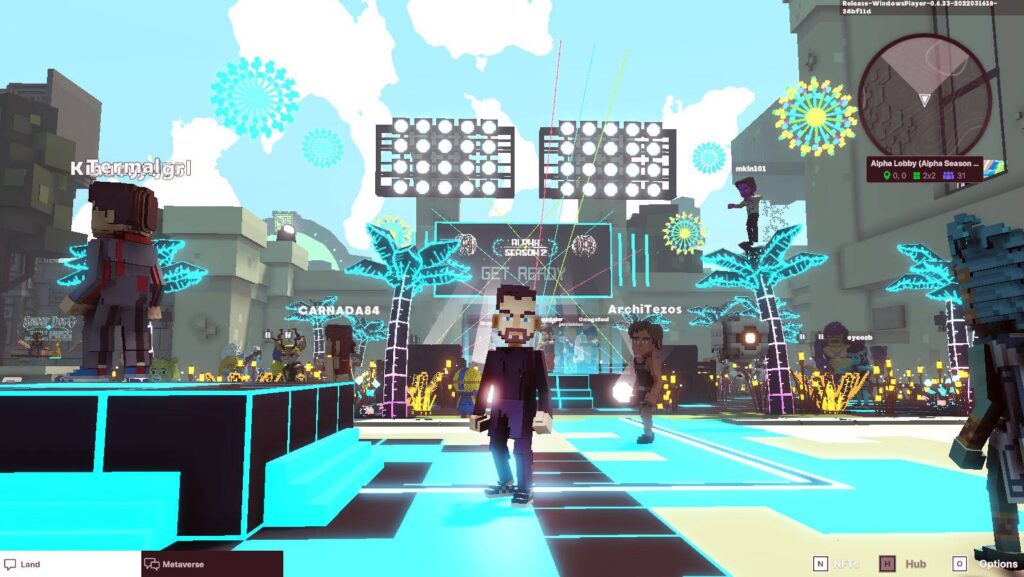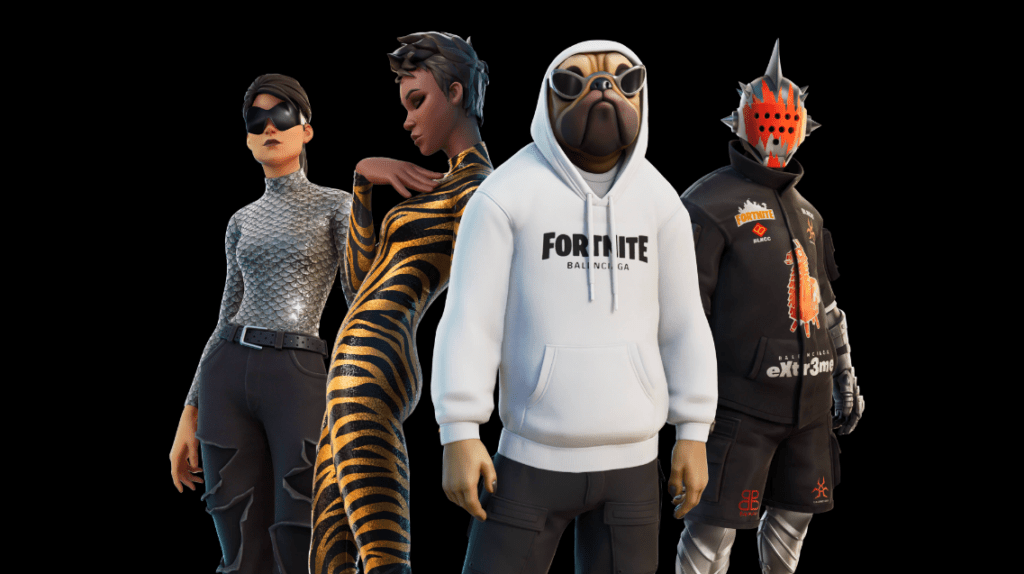In this article, we will talk about the phenomenon and “magic” of Metaverse, what it means, as well as how and why large companies and big brands are experimenting with it. So let’s dive in!
What is The Metaverse?
First things first, let’s dissect the term “metaverse.” The term “metaverse” was first mentioned in the 1992 science fiction novel “Snow Crash” by Neal Stephenson. In his novel, people interact with each other using their avatars in 3D space that resembles today’s internet. Stephenson nailed the idea of the metaverse back then, and its modern connotation remains almost unchanged: the Internet becomes a universal and immersive virtual world that is facilitated by the use of virtual reality hardware and augmented reality headsets.
According to Precedence Research, the global metaverse market was valued at $51.69 billion in 2021, and it is estimated to surpass around $1.3 trillion by 2030.
Metaverse is strongly interconnected with Web 3.0, the next stage of internet evolution, known as “Read-Write-Own”, which is expected to be a decentralized place with more equality, open-source development, and more personal privacy.
Crypto and blockchain technology are expected to form the “backbone” of the metaverse, where the cryptocurrencies will be used for buying and owning, while blockchain technology will be utilized to enable apps for activities like shopping and gaming.
In fact, it can be claimed that online video games have already incorporated some of the elements of metaverse technology. For instance, Second Life, a virtual world platform that launched in 2003, is frequently referred to as the first metaverse because it combined several features of social media with a persistent three-dimensional environment in which the user is represented by an avatar.
Metaverses, according to Second Life creator Philip Rosedale, are three-dimensional versions of the Internet that are populated with real people, and social interaction and 3D virtual worlds are key elements of such massively multiplayer online spaces. Thus, most well-known online games such as World of Warcraft, Fortnite, or Roblox should be seen as metaverses.
However, there is another cornerstone that is heavily linked with the Metaverse, a key component of the Metaverse’s economy. Yes, we are talking about NFTs.
NFTs and Metaverse
In addition to a social environment where individuals can communicate with one another, the metaverse can also provide a virtual marketplace where people can purchase and sell goods using NFTs.
NFT stands for “non-fungible token.” Non-fungible is an economic term that you could use to describe things that are not interchangeable with other items because they have unique properties.
In addition to being an asset in themselves, such as music or digital artwork, NFTs can also be used to buy and sell digital representations of real-world assets, such as artwork and real estate.
For instance, let’s take The Sandbox game as an example – a decentralized NFT gaming metaverse based on Ethereum blockchain.
The Sandbox game is one of the GameFi projects in which the entire game universe and in-game content are created and maintained by the players. You play the game and receive NFTs during the gameplay, which you then trade on the marketplace for cryptocurrency.
First, the user has to buy himself or herself “land,” which is an in-game asset that is bought in the form of NFT. Then, the user should develop it, increase its value by creating housing, build a multiplayer experience by hosting contests and events, and, on top of that, create assets and games on this land.
This makes the relationship between the metaverse and NFTs obvious. The metaverse, like any other digital economy, needs a currency to effectively function in the virtual economy.

However, online games are not the only ones that are implementing metaverse technology, and big brands are not far behind — many of them have already joined the list of names that have joined the metaverse hype. So who are they?
Brands with their own Metaverses
In the last few years, brands like Nike, Adidas, Burberry, and many more have launched NFT projects and/or digital goods that are functional in third-party metaverses. This is a major step in digital marketing and shows the interest of big brands in blockchain technology and the crypto world.
However, some brands go even further and start creating their own metaverse. Let’s take a look at some of them below.
Facebook/Meta
Mark Zuckerberg, the CEO of Facebook, rebranded Facebook, Inc. as Meta in October 2021. He announced the company’s new mission: to bring the metaverse to life and help people connect, find communities, and grow businesses. He also announced plans to invest at least $10 billion in the metaverse project, which was later revealed as “Horizon Worlds.”
At that time, Meta also unveiled new key components for the metaverse, including the Presence Platform (which will allow for new mixed reality experiences on its Oculus Quest 2 virtual reality headsets) and a $150 million investment in the growth of the next generation of creators.
However, it seems that the project is struggling, to say the least. The Wall Street Journal has obtained internal memos that reveal Horizon World’ failing. Meta had the goal of acquiring 500,000 users by the end of 2022. Unfortunately for Meta, memos show Horizon World’s current user count is under 200,000, and Meta has revised its year-end user goal to 280,000.
It’s still too early to draw any conclusions, but so far it seems that Meta has to try a different approach to draw attention and users to its metaverse project.
Disney
Back in December 2021, Disney filed a patent for a “virtual-world simulator,” which was supposed to reproduce one of the company’s theme parks into a 3D realm with “highly immersive, individualized 3D virtual experiences without requiring those users to wear an augmented reality AR viewing device.”
Some time later, Bob Chapek, the chief executive of Walt Disney Co., announced future plans that include adopting blockchain technology and the metaverse to enhance storytelling for the next 100 years. Disney’s digital strategy for the Metaverse, according to Chapek, is next-generation storytelling. He disclosed that his company would use consumer streaming habits and metaverse capabilities to deliver personalized entertainment experiences.
While Disney is still working on their metaverse, they’ve already started introducing hardware that can help their guests “unlock new moments of magic.” Specifically, when guests enter a theme park, this MagicBand+ device activates at various times with color-changing lights, haptic vibrations, and gesture recognition.

Apple
Apple has not yet officially announced its own metaverse, but it has begun quietly working in the background on technology that indicates their plans to create their own metaverse.
According to Bloomberg, Apple is working on a high-end mixed reality headset that offers both virtual reality and augmented reality functionality. The headset may be called Reality One or Reality Pro, and it is expected to hit the market in 2023.
Moreover, Apple is reportedly developing a RealityOS operating system, along with experiential versions of apps like Maps and FaceTime, as well as avenues to consume media and play games.
It also seems that Apple is planning to give their own special name to their product, since Apple’s CEO Tim Cook is not a fan of such a hyped word as “metaverse,” saying that “I’m really not sure the average person can tell you what the metaverse is.”
Which brands have used Metaverse in their promotion?
Not every brand is eager to spend millions of dollars to create their own metaverse; however, many of them are willing to promote their name and goods in already existing metaverses. Let’s take a look at some of these integrations.
Coca-Cola & Decentraland
Coca-Cola launched its NFT collectible in the OpenSea NFT market in July 2021. One of the collectibles included a wearable bubble jacket for avatars in the game called Decentraland.
It could be worn by avatars on the Decentraland platform; this special jacket could be purchased with NFTs by Decentraland avatars, who could then resell it to other avatars in Decentraland.
In addition, Coca-Cola introduced its signature drinks into Decentraland.The users could get a “loot box” that offered a fridge stacked with the drink called Coca-Cola Zero Sugar Byte.
Hyundai & Roblox
Hyundai was one of the first players in the automotive industry to decide to join the metaverse hype. They released a game called “Hyundai Mobility Adventure” on the popular platform Roblox, which featured Hyundai Motor’s products and future mobility solutions.
The game allowed users to experience Hyundai’s mobility offerings and also to customize their avatars.
Hyundai officially called this integration “metamobility”, which is aimed at combining virtual reality and the real world by depicting their idea of how robots and flying cars will be brought in real life and how the future mobilities will look like.
Balenciaga & Fortnite
In September 2021, the fashion brand Balenciaga became the first ever clothing brand to enter the Fortnite gaming platform, giving them a unique opportunity for marketing their brand as well as selling NFTs, including virtual clothes, skins, and accessories.
A total of four new skins were created for play, along with Balenciaga-themed accessories (e.g., designer pickaxes, backpacks, etc.). Certainly, a real-world clothing line was also introduced for purchase.
The Balenciaga-themed hub was also introduced into the game, and it included a virtual Balenciaga store where players could buy different cosmetics for their avatars.
Moreover, an animated billboard featuring the walking dog Doggo—one of the newly introduced in-game skins — was shown in New York City, London, Tokyo, and Seoul.

Fortnite characters created with Balenciaga’s clothes & accessories; Source: Epic Games
Why do brands enter the metaverse?
There are quite a few benefits that big brands can get from entering the existing metaverses or developing virtual spaces of their own.
- Increasing brand awareness and attracting a new and young audience, as well as strengthening ties with already existing customers and consumers
- Facilitating a completely new experience for customers by allowing more interactivity and engagement with the brand’s products
- Using the metaverse can also help brands test new products before they are released to the public by creating a prototype of the product, allowing customers to test it out, and then gathering feedback from them.
- Metaverse can serve as a new way of marketing and advertising the products.Furthermore, because virtually anyone from any country on the planet can enter a metaverse and interact with brands, such digital advertising may be able to reach more potential customers.
- Monetizing digital assets via NFTs can create an additional source of income for brands. In addition, this creates an opportunity for brands to join crypto and blockchain communities, thus increasing their awareness among crypto enthusiasts.
Final thoughts
The Metaverse has created a unique form of digital economy with unlimited opportunities not only for users but also for commercial brands as well.
The metaverse can be seen as a hybrid of technology, culture, and art. Although it is still in its infant stages, some of the brands have already taken their chances to express themselves and promote their products via one-of-a-kind technology, and we definitely will see this trend growing in the future.
FAQ
What is metaverse?
The term “metaverse” was first mentioned in the 1992 science fiction novel “Snow Crash” by Neal Stephenson. In his novel, people interact with each other using their avatars in 3D space that resembles today’s internet.
When was the first metaverse launched?
Second Life, a virtual world platform that launched in 2003, is frequently referred to as the first metaverse because it combined several features of social media with a persistent three-dimensional environment in which the user is represented by an avatar.
